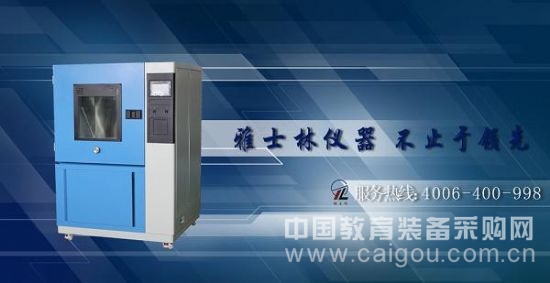The sand dust test chamber test workpiece is exposed to a vertical flow rather than laminar flow and containing a specified amount of dust. To this end, the test dust should be agitated and blown into the sealed test chamber. As specified in the relevant specifications, the sample should be connected to a vacuum pump for pumping, so that the gas in the dust-containing test chamber enters the sample through a gap, casing or other similar components. The pressure drop should be adjustable and monitored and the pumping rate should be measured.
The sand dust test chamber is based on the operating conditions of the sample. Sample housings can be divided into two types:
Type 1: The pressure inside the sample housing may be different from the outside atmospheric pressure, for example due to the different air pressure caused by the thermal cycling during operation. For samples with type 1 housing, place in the test chamber and install in the normal position of use, connect the vacuum pump so that the internal pressure of the sample is below atmospheric pressure. For this purpose, a suitable hole should be provided on the outer casing. If a drain hole is already provided in the sample wall, the vacuum tube should be connected to the hole without re-punching. If there are more than one drain hole, the vacuum tube should be connected to one of the holes, and the other holes should be sealed during the test.
Type 2: The air pressure in the sample casing is the same as the outside air pressure. For samples with a Type 2 enclosure, place in the test chamber and install in the normal position of use. All open holes remain open.
The sand dust test box is for the test workpiece placement requirements and solutions. Now the Beijing Yashilin Technology Department lists them for you:
1. The sample volume should not exceed 25% of the volume of the test chamber. The sample base should not exceed 50% of the horizontal area of ​​the test chamber working space.
2. If the sample size does not meet the previous one, the relevant specifications should specify the following methods:
1. Test the sealed portion of the sample separately;
2. Test sample representative parts, including components such as doors, vents, bearings, seal shafts, etc., and fine parts including products such as terminals, collector rings, etc., should be kept in place during the test;
3. Test small samples with the same design details as the original sample.
——Beijing Yashilin Testing Equipment Co., Ltd. (Technical Department)
The sand dust test chamber is based on the operating conditions of the sample. Sample housings can be divided into two types:
Type 1: The pressure inside the sample housing may be different from the outside atmospheric pressure, for example due to the different air pressure caused by the thermal cycling during operation. For samples with type 1 housing, place in the test chamber and install in the normal position of use, connect the vacuum pump so that the internal pressure of the sample is below atmospheric pressure. For this purpose, a suitable hole should be provided on the outer casing. If a drain hole is already provided in the sample wall, the vacuum tube should be connected to the hole without re-punching. If there are more than one drain hole, the vacuum tube should be connected to one of the holes, and the other holes should be sealed during the test.
Type 2: The air pressure in the sample casing is the same as the outside air pressure. For samples with a Type 2 enclosure, place in the test chamber and install in the normal position of use. All open holes remain open.
The sand dust test box is for the test workpiece placement requirements and solutions. Now the Beijing Yashilin Technology Department lists them for you:
1. The sample volume should not exceed 25% of the volume of the test chamber. The sample base should not exceed 50% of the horizontal area of ​​the test chamber working space.
2. If the sample size does not meet the previous one, the relevant specifications should specify the following methods:
1. Test the sealed portion of the sample separately;
2. Test sample representative parts, including components such as doors, vents, bearings, seal shafts, etc., and fine parts including products such as terminals, collector rings, etc., should be kept in place during the test;
3. Test small samples with the same design details as the original sample.
——Beijing Yashilin Testing Equipment Co., Ltd. (Technical Department)

Stroller Sun Shade,Sun Shade For Stroller,Baby Stroller Sun Shade,Double Stroller Sun Shade
DongGuan Baby-Plus baby ware Co., Ltd. , https://www.baby-plus.com